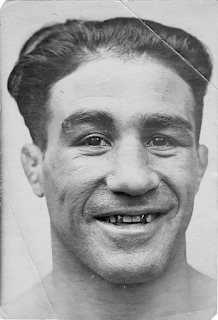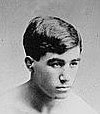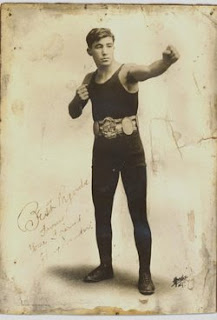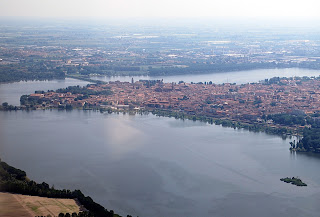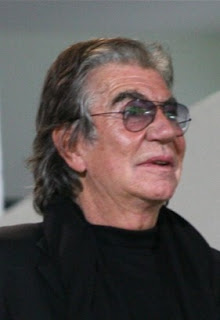His copies took Canaletto paintings to wider world
 |
| Visentini's engraving, a copy of a Canaletto painting, looking east along the Grand Canal from Santa Croce |
Antonio Visentini, whose engravings from Canaletto’s paintings
helped the Venetian artist achieve popularity and earn commissions outside
Italy, particularly in England, was born on this day in 1688 in Venice.
A pupil of the Baroque painter Giovanni Antonio Pellegrini,
Visentini was commissioned by Canaletto’s agent, Joseph Smith, who was the
British Consul in Venice, to produce engravings of Canaletto’s celebrated views
of the city to be published as a catalogue.
Engraving itself was an intricate skill and in the days
before photography anyone who could produce faithful copies of paintings or original art
that could be printed on paper was much in demand.
Visentini embarked on his first series of 12 Canaletto
views, mainly of canal scenes, in around 1726 and they were published in 1735.
 |
| Visentini's capriccio of Mereworth Castle in Kent |
This was followed by two more series of engravings of
Canaletto works arranged by Smith, which were published in 1742. In all, Visentini copied some 38 Canaletto
views, which not only furthered Canaletto’s career but his own.
Smith encouraged Canaletto to travel to England to paint
views of London, while Visentini himself was engaged in collaboration with
Francesco Zuccarelli, an artist originally from Tuscany, to paint capricci –
idealised fantasy views – of some grand English residences, including
Burlington House, a mansion on Piccadilly in Mayfair, and Mereworth Castle, a
copy of Andrea Palladio’s Villa Capra – better known as La Rotonda – in Kent.
Visentini had a long association with Joseph Smith, who hired him in 1740 to renovate and redesign his residence on the Grand Canal,
Palazzo Balbi, which he had hitherto been renting but decided to buy after
being told the position of British Consul was to be his.
 |
| The Palazzo Giusti on the Grand Canal was built in 1766 to Visentini's plans |
Smith, an enormous admirer of Palladio, wanted the palace in
particular to have a Palladian façade.
Originally built in 1582 as the residence of the Balbi family, the
palace is now the seat of the president of the Veneto region and the regional
council.
Further along the Grand Canal, Visentini designed the
Palazzo Giusti, a four-storey structure built in 1766 for the Miani family, who
would later sell it to the Coletti, who in turn sold it on to the Giusti
family. Visentini’s design features
three ground-floor niches, displaying statues.
In Vicenza, Visentini painted frescoes at the Villa
Valmarana, for which Gian Domenico Tiepolo painted the figures.
In the 1760s the English architect James Wyatt travelled to
Venice to study with Visentini as an architectural draughtsman and painter.
Visentini, who was also the author of a number of treatises
on perspective, was a professor at the Accademia di Belle Arti in Venice from
1772–78. He died in his home city in 1782 at the age of 93.
 |
| The Palazzo Balbi at the entrance to Rio de Ca' Foscari |
Travel tip:
Palazzo Balbi can be found on the Grand Canal at the point
at which the canal makes a near-90 degree turn at the entrance to the Rio de Ca’
Foscari. It was between 1582 and 1590 to
a design by Alessandro Vittorio in a Mannerist style characterized by
Renaissance and Baroque influences. The
Ca’ Foscari, on the opposite side of the Rio de Ca’ Foscari, tends to attract
more attention from visitors but the Palazzo Balbi is a handsome building
nonetheless.
 |
| The Baroque church of Santa Maria della Salute |
Travel tip:
Palazzo Balbi is in the Dorsoduro sestieri, a favourite
district with many regular visitors to Venice with a rather more relaxed
atmosphere, say, than San Marco, where it is possible to feel overwhelmed by
the numbers of tourists. Yet Dordosuro
contains many notable attractions, such as the church of Santa Maria della Salute,
the Accademia gallery, the Peggy Guggenheim Collection and the Ca’ Rezzonico
museum. The Campo Santa Margherita is popular for its late-night bars,
particularly with students, who relish its more Bohemian feel.
Also on this day:






